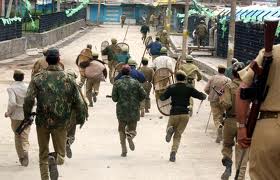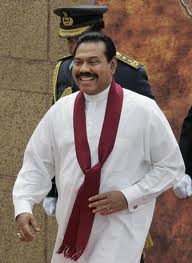 In the immediate aftermath of the war’s end, a massive military presence was more than obvious. At the end of the day, 27 years of civil war shaped the mindset of the government and army leaders and it was quite understandable the logistic worry that the LTTE could regroup again. Now, after 3 years, with people still in need of basic aid, like sanitation and housing, how is the situation? Pretty tough.
In the immediate aftermath of the war’s end, a massive military presence was more than obvious. At the end of the day, 27 years of civil war shaped the mindset of the government and army leaders and it was quite understandable the logistic worry that the LTTE could regroup again. Now, after 3 years, with people still in need of basic aid, like sanitation and housing, how is the situation? Pretty tough.
There are no direct statements of the government about military presence, but in recent studies( Economic and Political Weekley) it is possible to argue some figures. Apparently, almost 60% of the entire Sri Lankan forces is deployed in the Northern Provinces. That’s make up for roughly 200 000 men (198 000 the precise count) , in control of one of the less densely populated area in the island, with around 1 million of people (997 754). The militarization then is 198 soldiers per 1000 civilian population. Is that high?
The Institute of Defense Analyses (IDA), compiled a study for the the US Department of Defence and recommended a density of 40/50, to secure high confidence during active theatre of operations, ie. where the hostilities are still ongoing. In Iraq during the 2007 ‘Surge’, the most critical offensive during the US presence, density was 20 per 1000.

Indian police chasing protestors outside Jamia Masjid,Kashmir
courtesy Altaf Zargar
In Northern Ireland in the ’70s, 23; in Algeria, when the French security forces peaked, it reached 60. In Russia, during the Second Chechnya War, it was 150 and it was considered an extremely hard and intrusive presence. Finally in Kashmir and Jammu, considered as the most militarized region in the world, density of security forces doesn’t reach 40 per 1000 (38).
More than 15 divisions of the Sri Lankan army station in the Vanni. Those forces simply stayed after the end of the world, establishing 4 Headquarter in Jaffna, Mullaitivu, Kilinochi and Vavunya.
Several reports, including British High Commisioner 2, pointed out the high level of militarization and the disruption in day to day life. People lament that even to organize children’s birthday party in private house, you need the authorization of the military command. More recently, it was highlighted the phenomenon of land grabbing by the army. This massive presence doesn’t even guarantee security: in fact police is almost absent in the North. In a statement of the UK Border Agency, considering asylum claim, noted that the personnel was below the request, with few police station manily concetrated in towns, where the actual presence is spread in rural villages. Most of all, of the 83,423 active police men, only 1093 where Tamil. Few of Non-Tamil personnel speaks Tamil or English.
This massive presence doesn’t even guarantee security: in fact police is almost absent in the North. In a statement of the UK Border Agency, considering asylum claim, noted that the personnel was below the request, with few police station manily concetrated in towns, where the actual presence is spread in rural villages. Most of all, of the 83,423 active police men, only 1093 where Tamil. Few of Non-Tamil personnel speaks Tamil or English.
Now the situation is that the army is massively deployed to patrol and guard the population in the North; you may consider it a gigantic prison. What is the need to such a presence, after the end of hostilities?
 Before the IV Eelam War the Northern and Eastern provinces were traditionally inhabited by Tamils. This legacy is not just folklore; in fact historically the Tamil kingdom was independent and separated from the other Sinhalese kingdom. Only the European colonialism brought together the Tamils of the North under a unified administration in Colombo. As recently as 2006, during the peace talks, a proposal for highly devolution of powers in the context of a federation, was still on the table. Actually it was more a resistance of the LTTE, that didn’t want to give up a complete independence, the main reason to the failure of Tamil State, joint in a federation. So you can read the IV Eelam War not only as the legitimate reaction of a State to regain possession of his sovereignty and integrity, but also a proper military invasion and occupation of foreign land. The Sri Lankan army is establishing its presence in terms of a conquest. The government of Sri Lanka is thus still in the business marking its ownership ‘de facto’ practically, before even assessing the status ‘de iure’, juridically. It is still producing its legitimacy in the North, by military means.
Before the IV Eelam War the Northern and Eastern provinces were traditionally inhabited by Tamils. This legacy is not just folklore; in fact historically the Tamil kingdom was independent and separated from the other Sinhalese kingdom. Only the European colonialism brought together the Tamils of the North under a unified administration in Colombo. As recently as 2006, during the peace talks, a proposal for highly devolution of powers in the context of a federation, was still on the table. Actually it was more a resistance of the LTTE, that didn’t want to give up a complete independence, the main reason to the failure of Tamil State, joint in a federation. So you can read the IV Eelam War not only as the legitimate reaction of a State to regain possession of his sovereignty and integrity, but also a proper military invasion and occupation of foreign land. The Sri Lankan army is establishing its presence in terms of a conquest. The government of Sri Lanka is thus still in the business marking its ownership ‘de facto’ practically, before even assessing the status ‘de iure’, juridically. It is still producing its legitimacy in the North, by military means.

courtesy Reuters
Along this process, Colombo wants to teach the Tamil population what is the real balance of power. The Sri Lankan government is actively involved in the subjugation of the Tamils and wants to assert its dominion. When Colombo will recognize that its expansion is finally rooted and accepted by the people, then it will be time for de-militarization, not earlier. Now, you can question if it is legitimate for a State to impose over its own citizens such a constant regime of violence. The answer probably is that without this harshness, the population will reject its presence. This makes strategically sense, but it doesn’t add an inch of legitimacy in the actions of the Sri Lankan government.
 The focus on LLRC is a diplomatic mirror to elude the reality of fact: the US, Europe and India can confront Sri Lanka on that irrelevant field. Sri Lanka will respond, UN will make more pressure, finally they will find a compromise. Everybody is happy, the West shows it has forgot Sri Lanka, India can say that they fight for the Tamils on the international stage and Colombo can cry on this fake diplomatic defeat.
The focus on LLRC is a diplomatic mirror to elude the reality of fact: the US, Europe and India can confront Sri Lanka on that irrelevant field. Sri Lanka will respond, UN will make more pressure, finally they will find a compromise. Everybody is happy, the West shows it has forgot Sri Lanka, India can say that they fight for the Tamils on the international stage and Colombo can cry on this fake diplomatic defeat.




